This Summer, Let Your Kids Discover India Through These 5 Timeless Art Forms
Summer holidays are meant to be a time of exploration, play, and discovery, yet more often than not, we find children glued to phones or tablets, swiping endlessly to pass the time. While digital entertainment has its place, it rarely offers the tactile joy, focus, or cultural richness that traditional crafts can bring.
This summer, why not swap screen time for story time and introduce your child to the vibrant world of Indian heritage through hands-on creativity? Traditional crafts are fun to learn, and they carry stories, skills, and values passed down over generations.
Here are five lesser-known crafts that parents can explore with their children at home, using simple materials and a little curiosity:
1. Pattachitra – Painting stories on cloth
Why is it important?
Pattachitra is an art form that is a vibrant method of storytelling. Originating in Odisha and Bengal, it was traditionally used to depict scenes from epics like the Ramayana and local folk tales on palm leaves or cloth. By engaging children with this craft, parents introduce them to narrative sequencing, mythology, and fine brushwork.
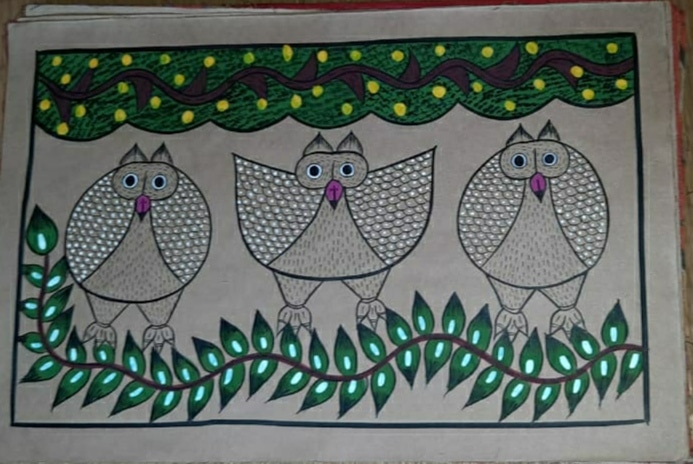 Encourage your children to sketch each part of the story with a pencil before outlining in pen or paint; Picture source: International Indian Folk Art Gallery
Encourage your children to sketch each part of the story with a pencil before outlining in pen or paint; Picture source: International Indian Folk Art Gallery
How can parents teach it?
Begin by selecting a simple and engaging story that your child enjoys, for instance, a short episode from Krishna’s childhood. Provide a large sheet of paper and help them divide it into panels, much like a comic strip. Encourage them to sketch each part of the story with a pencil before outlining in pen or paint.
Traditional Pattachitra uses natural colours and intricate borders, but children can start with basic poster paints and coloured pens. Let them decorate the frame with repeated motifs, such as fish, flowers, or geometric borders, to capture the essence of the style without getting overwhelmed by its complexity.
2. Madhubani – Filling every inch with imagination
Why is it important?
Madhubani painting, from Bihar, is a celebration of order and exuberance. It teaches children balance, symmetry, and the charm of nature-inspired design. Traditionally painted by women on mud walls, it is strongly tied to festivals and everyday spirituality.
How can parents teach it?
Begin by introducing your child to the key elements like bold black outlines, detailed patterns, and motifs such as peacocks, trees, and sun deities. Allow them to choose a central subject, for example, an elephant or fish, and then build a surrounding scene using repeating patterns and frames.
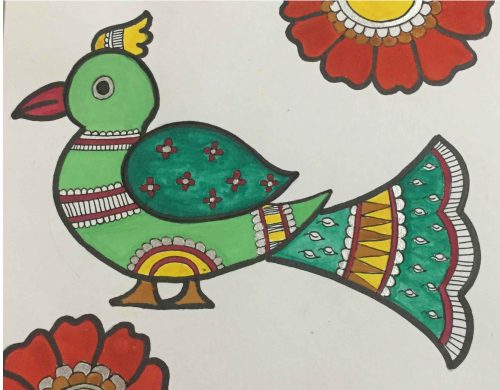 Use felt-tip pens or watercolours to bring out the true essence of Madhubani painting; Picture source: Pinterest
Use felt-tip pens or watercolours to bring out the true essence of Madhubani painting; Picture source: Pinterest
Unlike free-form drawing, Madhubani encourages structured creativity, so parents can guide children in dividing the page and filling it methodically. Use felt-tip pens or watercolours for a colourful effect, and discuss how the artwork tells a story without needing words.
3. Blue Pottery – Elegant designs with clay and colour
Why is it important?
Originating in Jaipur and influenced by Persian design, blue pottery is famous for its floral motifs and iconic cobalt-blue colour. While traditional blue pottery involves glazing and firing, parents can simplify it to introduce children to ceramic design, form-making, and pattern work.
How can parents teach it?
Use air-dry clay or modelling dough to shape simple items such as tiles, coasters, or small bowls. Once dry, children can draw floral or paisley patterns onto the surface using a pencil, then fill them in with blue and white paints.
The goal is not perfection, but an appreciation for the soft curves and balance that define this craft. Parents can show reference images and talk about how each design element is both decorative and symbolic. If real clay is not available, cardboard or thick paper can be painted in similar styles, focusing purely on the motifs.
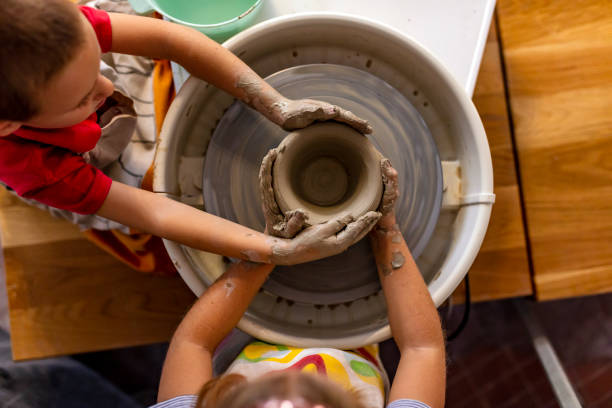 Use air-dry clay or modelling dough and help your kids to shape simple items; Picture source: iStock
Use air-dry clay or modelling dough and help your kids to shape simple items; Picture source: iStock
4. Rogan Art – A rare dance of paint and fabric
Why is it important?
Rogan art is a rare tradition practised by a handful of artisans in Kutch, Gujarat. What makes it unique is the way paint is twisted and dragged onto fabric using a stylus, almost like painting with a thread. Teaching this art introduces children to one of India’s most endangered craft forms and shows how technique can turn something simple into magic.
How can parents teach it?
Instead of oil-based paints, parents can create a similar effect with thick acrylic paint or glue mixed with paint for a stringy texture. Using a stick or toothpick, children can “pull” the paint into designs on dark paper.
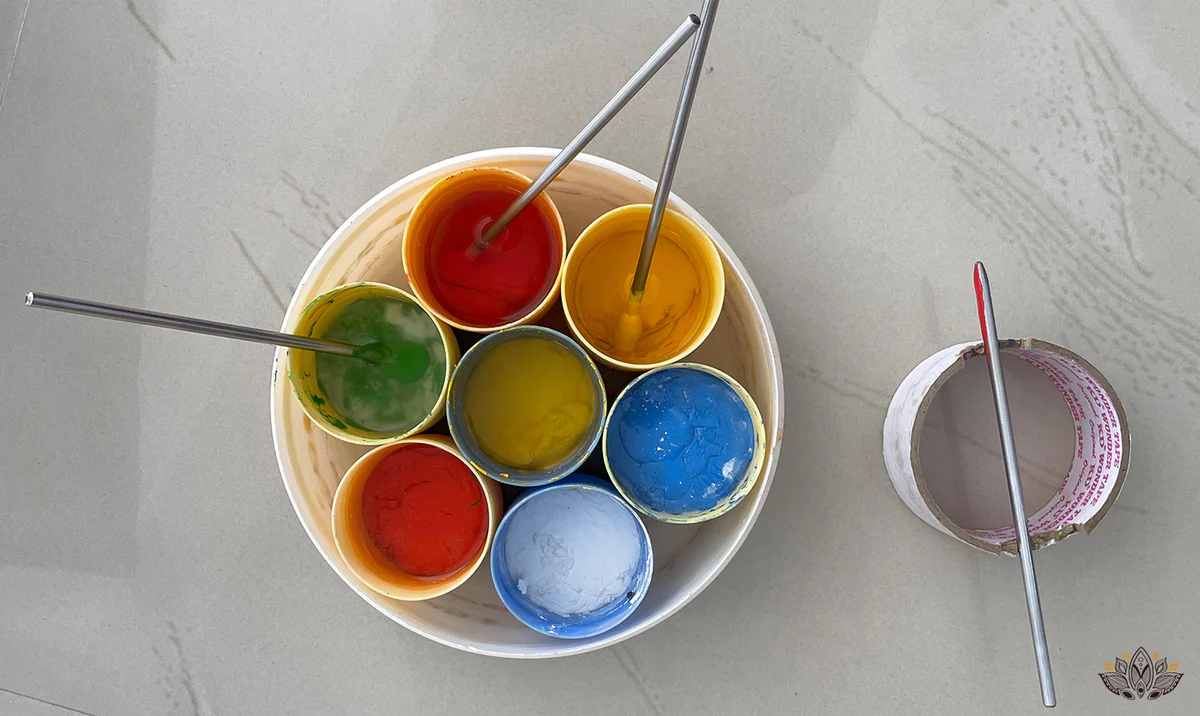 Parents can teach Rogan Art to their kids with thick acrylic paint or glue mixed with paint for a stringy texture; Picture source: AMOUNEE
Parents can teach Rogan Art to their kids with thick acrylic paint or glue mixed with paint for a stringy texture; Picture source: AMOUNEE
The traditional Rogan method involves folding the design in half to mirror it, a trick children will find both fun and fascinating. Parents can encourage abstract flowers, leaves, or symmetrical shapes to recreate the style in a child-friendly way, while sharing the story of how this rare craft is still done by hand and takes a lot of time.
5. Sikki Grass Weaving – Weaving sustainability into play
Why is it important?
Sikki grass work, native to Bihar, is traditionally used to create baskets, dolls, and household items from a golden-hued natural fibre. This craft teaches resourcefulness, care, and environmental consciousness, which are important values in today’s world. It also enhances hand strength and coordination through weaving and coiling.
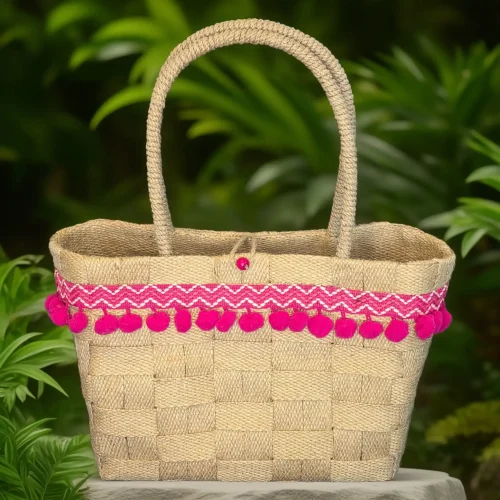 Real sikki grass may not be readily available, but you can teach your kids to make baskets with jute
Real sikki grass may not be readily available, but you can teach your kids to make baskets with jute
How can parents teach it?
Real sikki grass may not be readily available, but its essence can be captured with raffia, jute, or even strips of paper. Parents can introduce basic plaiting and coiling by taping down one end and letting children twist and glue the material into spirals or small bowls.
As they grow more confident, children can try forming shapes like stars, flowers, or wall hangings. This is also a brilliant opportunity to discuss how craftspeople once made everything they needed by hand, using materials from nature.
Edited by Vidya Gowri
News